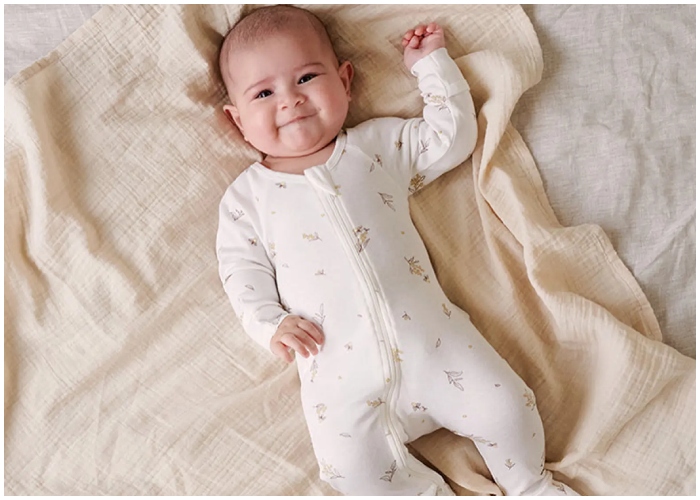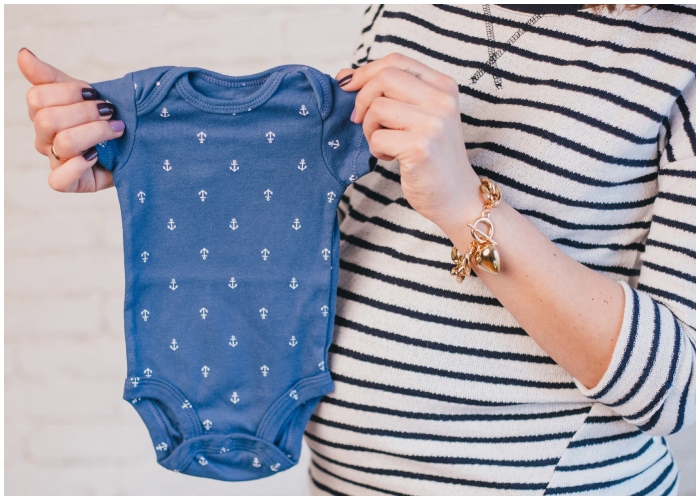Preparing for a new baby is exciting, and while it’s tempting to fill their closet with adorable outfits, practicality should guide your choices. Babies grow quickly, and you’ll likely receive many clothes as gifts, so focusing on the essentials is key. Here’s a comprehensive guide to what you really need for your baby’s first wardrobe and how to make smart, practical choices in those early months.

Must-Have Basics for Newborns
1. Bodysuits or Vests:
A staple in any baby’s wardrobe, bodysuits are versatile and essential for layering. For babies born in cooler months (spring, autumn, and winter), they’re typically worn under sleepsuits or outfits to keep babies warm. In the summer, they can be worn alone. Stock up on 6-8 bodysuits to ensure you have plenty on hand, as babies can go through several a day due to messy accidents.
2. Sleepsuits/Babygrows:
During the initial weeks, your baby will spend most of their time in sleepsuits. These garments are ideal as they’re comfortable, warm, and practical. Opt for sleepsuits with fasteners down both legs to make diaper changes easier. Again, having 6-8 on hand is recommended.
3. Cardigans:
Regardless of the season, having 2 cardigans is useful for layering, especially since babies can’t regulate their body temperature as adults do. Cardigans allow for easy temperature adjustments to keep your baby comfortable.
4. Hats:
Protect your newborn’s head with appropriate hats; a sunhat for the warmer months and a woolly hat for the winter.
5. Warm Jacket or Pramsuit:
For winter babies, a warm jacket or a pramsuit is essential for outings. These items keep your baby snug and warm but remember, they can be cumbersome to put on.
6. Scratch Mitts:
Newborns often scratch their faces accidentally, and their delicate skin can easily get irritated. Two pairs of scratch mitts can help prevent this.
7. Bibs:
With babies frequently spitting up small amounts of milk, having 6 bibs (preferably with a plastic backing for easier cleaning) will protect their clothes and keep them cleaner.
Planning for Growth
It’s difficult to predict exactly how long your baby will fit into newborn sizes. Some babies skip the newborn size entirely, while others might fit into them longer than the typical 0-3 months. As a general guideline:
- Newborn size is usually suitable for babies up to 56 cm (22 inches) in length and 4.5 kg (10 lbs) in weight.
- 0-3 months size fits babies up to 62 cm (24 inches) and 6.5 kg (14.5 lbs).
- 3-6 months size works for babies up to 68 cm (27 inches) and 8 kg (17.5 lbs).

Additional Tips for Baby Clothes
- Fabrics: Choose soft, breathable fabrics like 100% cotton for comfort, especially organic cotton which is gentle on the baby’s sensitive skin.
- Washing: Wash new clothes before they’re worn to remove any residues from manufacturing and storage. Use non-biological detergents that are gentler on baby’s skin.
- Outfits: Once you’re comfortable with the basics, you might want to explore more unique or styled pieces. Outfits are available in many cute combinations, but always prioritize comfort and ease of changing.
Dressing Your Baby
The key to dressing your baby is efficiency and simplicity. Lay the babygrow flat, place your baby on it, and insert the limbs one at a time, starting with the legs. Fasteners can be tricky, but with practice, you’ll manage them quickly. Always have your baby in a clean diaper before dressing to avoid any accidents on the new outfit.
Remember, while it’s fun to dress up your baby, the most important factors are their comfort and safety. Keep the wardrobe simple in the beginning and expand as you learn what works best for your baby and your lifestyle.